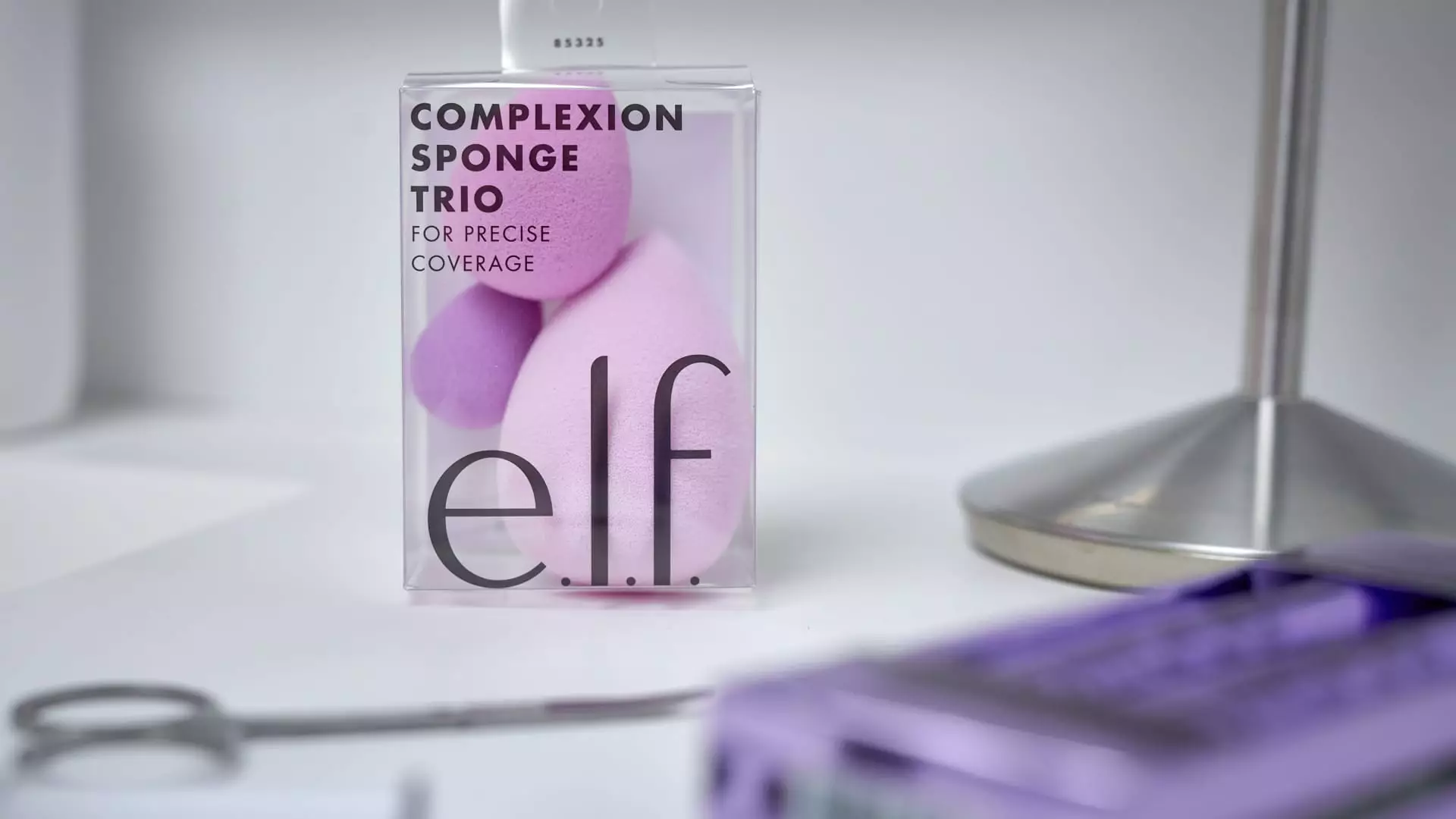E.l.f. Beauty, once regarded as a vibrant player in the cosmetics industry, recently announced a notable adjustment in its full-year guidance, reflecting the internal and external challenges the company is currently navigating. The brand reported a staggering 36% decline in profits, coupled with disappointing sales momentum observed in January. This downturn is a significant contrast to E.l.f. Beauty’s usual performance, which had positioned the company among the top performers in the beauty space. Despite experiencing a holiday sales increase that exceeded expectations, the net income fell short of analysts’ forecasts, causing a substantial dip of over 20% in its stock during after-hours trading following the announcement.
E.l.f. reported an earnings per share of 74 cents compared to the anticipated 75 cents, alongside revenue of $355 million that surpassed the expected $330 million. However, the profit margins were troubling. The reported net income for the last quarter indicated a drop from $26.9 million a year earlier to $17.3 million, raising questions about the sustainability of E.l.f.’s business model amidst changing market dynamics.
As fiscal year adjustments roll in, E.l.f. has provided new forecasts that fell below Wall Street’s expectations. Anticipating annual sales between $1.3 billion and $1.31 billion, these figures lag behind initial estimates of $1.34 billion. Furthermore, the expectation for adjusted earnings per share—now anticipated to be between $3.27 and $3.32—represents a significant downturn from previous projections. The grit in these lowered expectations is unambiguous, suggesting a need for strategic re-evaluation by the brand.
The implications of these adjustments extend beyond internal metrics, foreshadowing impacts on investor confidence and market positioning. E.l.f. is now predicting its earnings per share for the current quarter to reflect a decline, raising alarms about its capacity to maintain its edge in the highly competitive beauty landscape. This kind of significant correction hints at broader issues that warrant close scrutiny.
Addressing the underlying causes of this decline, CEO Tarang Amin provided insights that highlighted the overall sluggishness within the beauty category. Specifically, Amin attributed this drop in mass cosmetics sales to decreased consumer engagement and social commentary, vital components that traditionally drive enthusiasm and conversation around beauty products. Notably, the environment created by events such as the recent LA wildfires demonstrated a sensitivity among consumers, where ongoing tragedies led to subdued online activity concerning beauty products.
Moreover, the uncertainty surrounding social platforms like TikTok, essential for brand visibility and marketing, further compounded challenges. High engagement on social media commands considerable influence over consumer purchase decisions, and the reduced activity suggests that E.l.f. could be experiencing diminishing returns from its previous viral marketing methodologies.
Compounding these challenges is the evolving landscape concerning tariffs and global supply chain dynamics. With approximately 80% of its supply chain located in China, E.l.f.’s overall cost structures may be influenced by the new tariffs imposed. While Amin asserts that the recent 10% tariffs could have been more burdensome, the question of potential price adjustments remains open. The decisions made in this regard could shape future profit margins and ultimately impact the consumer relationship that has been central to E.l.f.’s success.
E.l.f.’s recent trajectory and performance indicate that while the brand maintains aspirations for growth, the overall acceleration is tapering. The brand’s distinct ability to create affordable alternatives to prestige products—what consumers affectionately term “dupes”—has historically attracted a diverse customer base. As the marketplace becomes increasingly crowded and competitive, E.l.f. may need to recalibrate its strategies to sustain relevance and profitability.
Looking Forward: Strategic Investment and Future Prospects
Despite the hurdles, Amin remains optimistic about E.l.f.’s future direction. He emphasizes the importance of taking a “prudent” approach to guidance and touts the brand’s achievement of outpacing the overall market within the broader beauty category. E.l.f. plans to channel its profits into refining inventory management systems and bolstering its infrastructure, reinforcing the foundation necessary for potential international expansion—a critical aspect of the brand’s long-term strategy.
As E.l.f. Beauty navigates this transitional period, the road ahead will certainly require sophisticated maneuvers. With fluctuating market trends and altered consumer behavior, adapting to these changes while preserving the essence of the brand is imperative. Going forward, E.l.f. must leverage its strength in innovation and connect authentically with its consumer base to regain momentum and secure its place as a market leader in the beauty industry.

